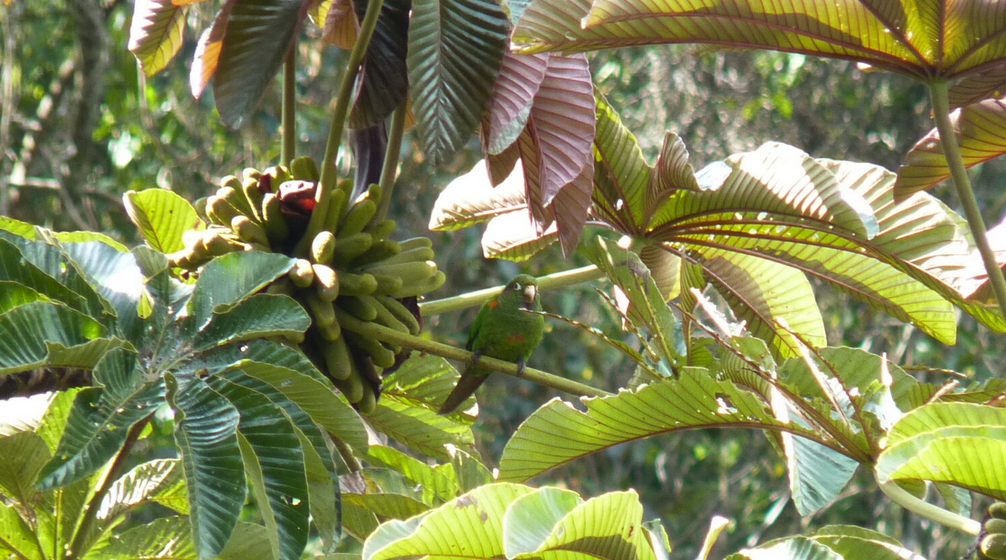Santa Marta Conure Conservation and Research
The Santa Marta Conure (Pyrrhura viridicata) is IUCN-Endangered in the wild due to habitat loss of 30% to 80%. The main threats to their forests are food agriculture, livestock farming, and logging, the impacts of which are ongoing. The species is not affected by illegal trapping, however there are records of hunting. Some birds are occasionally shot as crop pests.
The World Parrot Trust’s partner project Ciencia Serrana, in collaboration with Proyecto de Conservación de Aguas y Tierras (ProCAT Colombia) and SELVA Investigación para la Conservación en el Neotrópico, is making positive inroads in the conservation of Santa Marta Parakeets in the Sierra Nevada de Santa Marta. Initial efforts have focused on understanding the parakeet’s habitat, observing behaviour and distribution, and engaging local communities through workshops. The Ciencia Serrana team has installed 46 nest boxes in the birds’ habitat. Next is identifying the occupancy rate of the artificial nests, and assessing the relationship between design and materials used to build the boxes and their occupancy rate. Throughout the project, the local community has built, installed and monitored the nests.
Local community members, trained by WPT’s field technicians, are integral to monitoring these nests. Local engagement in Santa Marta Parakeet conservation strategies is vital to safeguarding the species.
Status: IUCN Endangered / CITES Appendix II
Population: 4000-4500, decreasing.
Range: Sierra Nevada de Santa Marta, NE Colombia.
Natural history: These parrots are found from 1800-2800 m (5904-9184 ft) in cooler humid mountain forest and forest edge, mainly in subtropical zone; may also occur in grass and bracken-covered slopes with mountain shrubs. Their diet includes fruits, flowers, leaves, lichens and seeds. Are usually seen in flocks of up to 20 individuals in flight across open country and roosts communally in a tree hollow or hidden in foliage at night. Two peak periods for breeding: December-May and May-October. Nests exclusively in dead Wax Palms.

